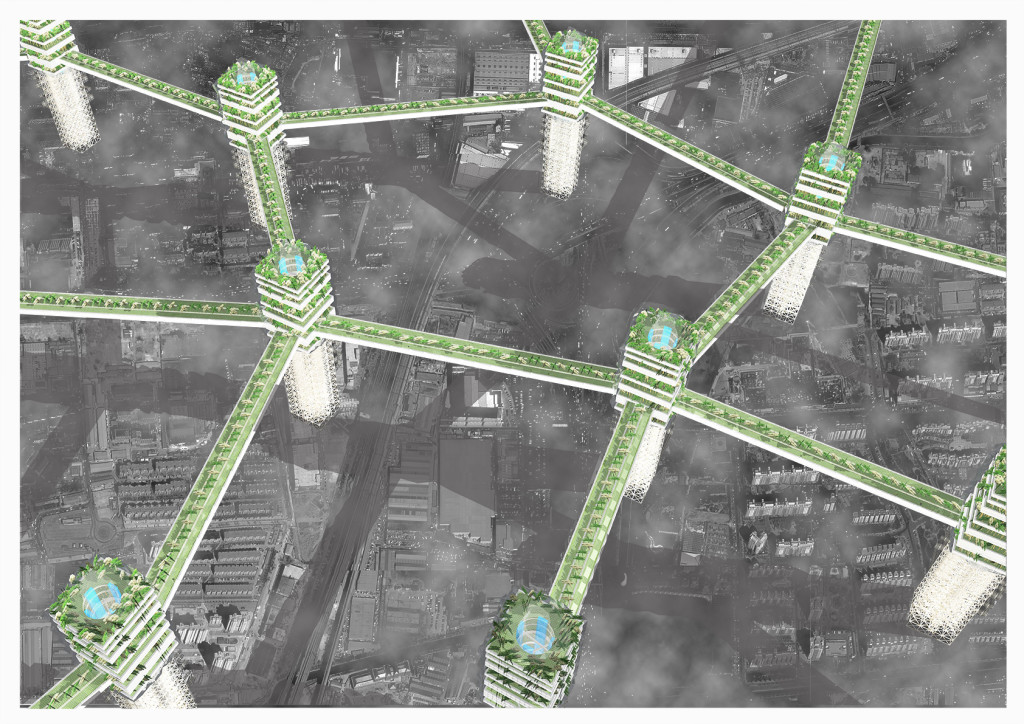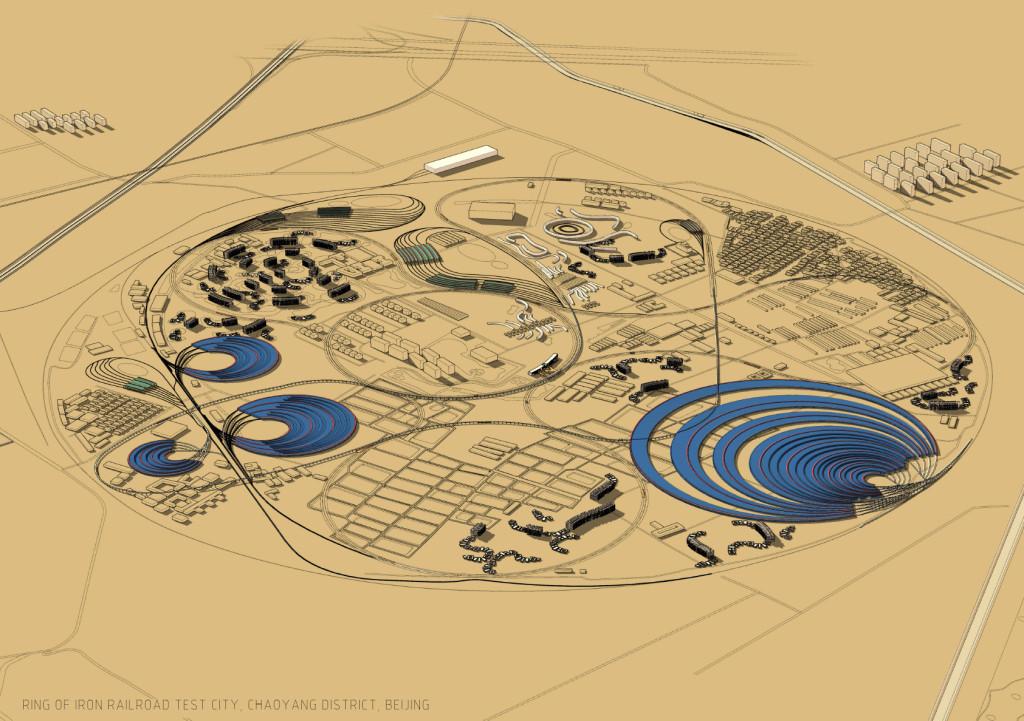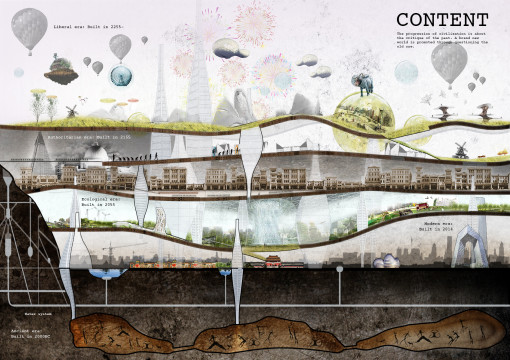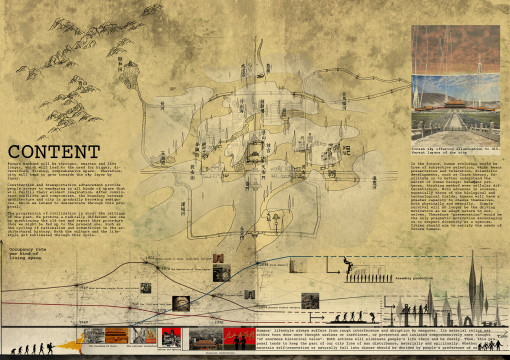Info:
Title: content - Code: 41c0fContest: Beijing / 2014
By: Peiying Ban - Xinwei Zhang - Yunjie Zhou - Jingxuan Hou
Views: 7343 Likes: 8
Votes:
Greg Lynn 8 Ai Weiwei 9 Sou Fujimoto 8 Eric de Broches des Combes 57.5
content
Charles Darwin taught us that, evolution of a species is decided by natural selection. This even applies to us as humans. Our modern body plan has drastically changed as we have adapted to our natural environment through a process of selection and rejection of physical features through the past millions of years. The development of Beijing during the last 100 years is analogous to our own evolution. Capital, as in money, plays a similar role as would natural selection; only the features that maximize profits are used. This is especially true with architecture. Like evolution, this also causes Beijing from its traditional spirit. As a result, Beijing loses its personality and is getting closer to other International cities like Chicago and Manhattan. In the future, human evolution would be free of subjective selection, which means preservation and toleration. Scientific developments, such as Chaos theory, facilitate us to better understand the secret of human beings: behavior patterns, thinking method even cellular differentiation. With advances in science, especially those of the biological and technological fields, humans will have a greater capacity to change themselves, both physically and mentally. Simple survival will no longer be the driving motivation as we adapt nature to ourselves. Therefore “preservation” would be the only pragmatic motivation encouraging us to respect diversity as a species. Cities should aim to satisfy the needs of future humans. Because future abundance of supplies, the extreme compulsion for efficiency will be lessened. The goals of new architectural forms would be aesthetic rather than capitalist. It will not result in simply abandoning older forms for the new, but rather try to satisfy people’s needs for a living environment together. Beijing once was the capital of six ancient dynasties, it’s vestiges built on top of the older layers that were only discarded for unsuitability. Future cities would not destroy the old patterns, but developed as additions. Mega-structures will be used to support and connect each layer. Consequently, the disturbance of living patterns by a few people’s prejudice is supposed to be minimized. Future people would choose different layers that are divided by era based on their spiritual pursuits and unique characteristics. Neither money nor manpower will be wasted on protecting the old architectures or demolishing them to build new ones. Architecture and the city would naturally be adapted to people’s activities. On the one hand, if people are no longer fond of the present lifestyle, the corresponding space will then fall into disuse. On the other hand, if people tend to pick it up again, there is always a place they can go back. During the city development progress which pointed to the sky, different technology and social cultures would emerge in an endless stream. In order to fit the demand of future mankind, Beijing should seek to preserve its history, both material and cultural, like a bed for living fossil. In this way, it will totally fulfill its function of a global city in the future. Future mankind will be stronger, smarter and live longer, which will lead to the need for bigger, diversified, flowing, comprehensive space. Therefore, city will tend to grow towards the sky layer by layer. Construction and transportation advancement provide people access to wandering in all kinds of space that will fulfill their wildest imagination. After consistent conflicts and compromises, the boundary between architecture and city is gradually becoming ambiguous, which we intend to demonstrate through this proposal. The progression of civilization is about the critique of the past. We promote a radically different new one by questioning the old one and repeat this procedure once we might be fed up to the present one, such as the cycling of rationalism and romanticism in the architectural history. Both the culture and the lifestyle get sublimated through this cycle.








